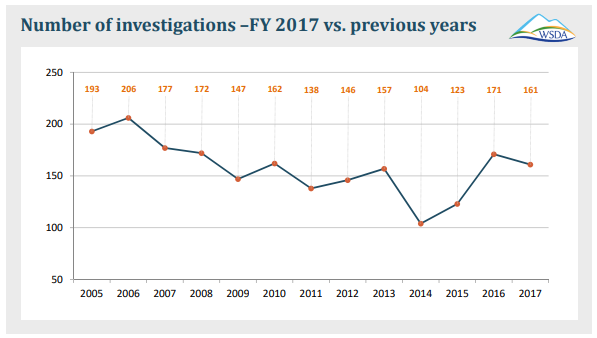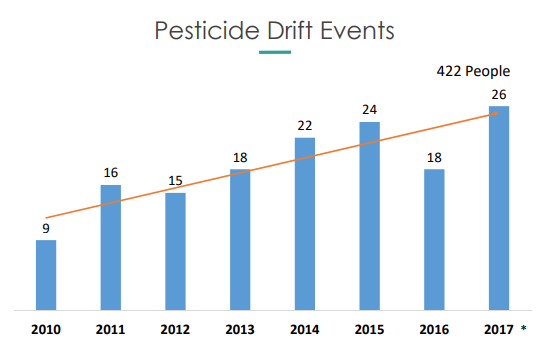Thursday, June 21st, marked the first meeting of the Pesticide Application Safety Workgroup, formed by the passing of Senate Bill 6529. The original version of the bill required a four-day spray notification and created a costly tracking database. The results would have been extremely damaging to Washington agriculture, costly to all taxpayers, and would have unjustly increased fear of pesticides. Additionally, it would have done little to nothing to help farmworkers, which was the expressed purpose of the legislation.
The final version of the bill created a workgroup to “minimize human exposure to pesticides” by:
- Reviewing existing state and federal regulations;
- Learning about new pesticide application technology;
- Reviewing the structure of the former PIRT panel to see if a similar group should be created;
- Reviewing current data and reports from agencies in Washington and other states.
I watch with trepidation because this workgroup originates from a proposal that would have decimated Washington agriculture and hurt farmers, farmworkers, and rural communities. Any recommendation coming from this workgroup must account for all costs that farms must bear and not dismiss concerns of the agriculture community with faulty statistics and facts.
What are some of these faulty statistics? During the 2018 legislative session, the myth was promoted that agricultural pesticides are unregulated. Thursday’s meeting should have put this myth to be when four agencies spent over an hour talking about the federal and state pesticide policies they are charged with overseeing. Washington State Department of Agriculture (WSDA), Washington Labor and Industries (L&I), Washington Department of Natural Resources (DNR), and Washington Department of Health (DOH) all play a role in regulating pesticide use and preventing drift.
However, it is clear how these myths can spread when even the responsible agencies have contrasting reports and are confused by their own data. WSDA noted that the number of investigations fell since 2005 and the spike in 2016/17 was from the addition of marijuana complaints. In 2017, 0f the 139 inspections, 38 were for agricultural pesticide use and only 16 resulted in enforcement actions.

The Department of Health told another story. Dating from 2010 to 2016, DOH showed that farmworkers account for 40% of the pesticide illness cases. The main root cause of pesticide illness among farmworkers, they said, was drift. However, the final slide alleged that agricultural pesticide drift events are becoming more common. This conclusion, however, is unsubstantiated by the data because they presented drift events for the entire population, not farmworkers.

Farm families, farmworker families, and neighbors all need to be protected from pesticide use. However, when DOH misrepresents data to advance a biased narrative against agriculture it os unhelpful for the discussion around preventing pesticide drift in agriculture. Instead, the narrative should focus on the facts of what farmers are doing to improve pesticide management.
To get a true understanding of the state of agricultural drift, multiply the acreages applied every year by the frequency of applications. This number should then be compared with drift events that occurred and will quickly show that despite a growing number of applications the chance of drift is decreasing. Dr. Steve Savage, on behalf of Washington Friends of Farms and Forests, found that 99.95% of all agricultural pesticide sprays occurred in Washington state without incidence.
Farmers care about pesticide management as much as farmworkers and neighbors. Solutions should focus on increasing applicator training and education for farmworkers, encouraging the ag community to improve neighbor to neighbor communication, and bringing the regulatory bodies together to coordinate data on a regular basis (this used to exist with the PIRT Panel, which was discontinued in 2008 due to budgetary constraints).
Additional regulations and biased facts are not the answer to making the probability of pesticide drift decrease from 0.05% to zero. Hopefully, the workgroup will recognize this as they move forward with future meetings.
Upcoming Meetings
- Monday, July 16 – Quincy, WA
- Wednesday August 15 – Yakima, WA
- Tuesday September 11 – Skagit County
To learn more about the Workgroup and please visit the Department of Health’s website.



